

Retro Arcadia
The games that made us. all the way back to the 1970s..
Reviews , ZX Spectrum
Game Review: Travel Through Time Vol. 1 – Northern Lights on ZX Spectrum

Throughout its lifetime, the limits of the ZX Spectrum were regularly tested and redefined by its racing games. Ironically, of course, that’s in stark contrast to its main 8-bit rival, whose limits were regularly defined by them… Buggy Boy, Super Cycle and maybe its interpretation of Power Drift excluded. Maybe.

Anyway, back on the Spectrum, we can go all the way back to the 1983-realism of Chequered Flag, with its lifelike cockpit and household name tracks; and it’s where my life with the Spectrum began! Not so much a racing game and more of a driving game, but no denying that the third-person 3D crime-fuelled cityscapes of 1986’s Turbo Esprit were a blueprint for Grand Theft Auto and more that followed. Things went nuts in 1987, with my number one (if we’re excluding Supersrint) Spectrum racing game ever Enduro Racer and its big thrill, big sprite off-road motorbiking; we also had another great arcade bike racer in Super Hang-On, and I’ll always maintain that the Spectrum’s conversion of Out Run was a stunner too! The superb arcade ports didn’t let up the following year, with WEC Le Mans’ super-smooth action coming very close to also being top of the pile. Then there was the depth of Nigel Mansell’s Grand Prix, and I’m also going to mention Super Trux for trying something new too, especially when it came to hills, and just being a really fun, under-appreciated racer!

Speaking of hills, 1989 saw a fantastic conversion of Power Drift which really nailed the gameplay of the original, and another game that’s often mentioned as one of the best (if not the best) of them all, Chase HQ, although as impressive as it runs, I’ve never really clicked with that on any system. I definitely clicked with Stunt Car Racer on another system (Atari ST), but the Spectrum also got a very impressive, albeit more bare bones version that really knows how to throw those big 3D shapes that make up those outrageous elevated tracks around. A couple of years later and we’re now really getting the most out the system’s 3D graphics capabilities – Chevy Chase is a beauty (especially the gorgeous sunset level); take your pick between Test Drive II or Toyota Celica GT Rally as the closest you’ll come to driving a car on the Spectrum (at least to look at…); and finally we approach the end of the Spectrum’s life with Super Monaco GP realising everything we thought we were looking at when we started our journey with Chequered Flag almost a decade earlier!

Super hang on a minute though! What’s all this talk about end of the Spectrum’s life? Okay, maybe briefly, but like another guy with a beard, it didn’t take Sir Clive’s little zombie long to rise from the grave with a bit of help from the insane homebrew scene that’s still thriving as we speak – no doubt whenever you’re reading this! We’ve had some absolute corkers when it comes to racing games especially over the last few years – all the way back in 2004 we had 4K Race, which was followed up with the sublime Pole Position-esque sequel 4K Race Refuelled, a super-smooth, super-fast arcade racer that fills a gap on the Spectrum I didn’t realise was there until I played it. Fast forward a few years to 2019 and we’ve got a couple of releases from developer Zosya Entertainment, who by this point were establishing themselves as a real sign of quality for modern ZX Spectrum gaming. The first game of theirs I remember wasn’t a racing game, but this really great looking fantasy (literally!) Amazon action adventure called Valley of Rains, complete with its raunchy cassette inlay! They’ve also produced the excellent platformer Bonnie and Clyde, in the vein of Bubble Bobble or Rodland, and the jaw-dropping first-person shooter The Dark: Redux, and you really need to be checking out anything with their name on… Including uber-stylised drift racer, Drift (which I’m rubbish at), and an arguably better take on the original Super Hang-On conversion by the name of Just a Gal, featuring the tale of a lady racer named Maureen!

And between the style and the storyline of these two games, we end our journey at the present day, with Zosya’s 2021 release, Travel Through Time Vol. 1: Northern Lights. Now, in getting here we’ve taken in the very best of ZX Spectrum racing (and sometimes ZX Spectrum gaming full-stop), but from the very outset it’s obvious that we’re also in the presence of something very, very special with this one!
We begin as you begin your amateur racing career in 1950’s Sweden, and what follows is a story-based racing game that spans four decades, six vehicles from those decades (up to the eighties in case you’re struggling to keep track) as the automotive industry develops in parallel, and follow the life of one family through that time. And all of this plays out through stylish cutscenes, and a variety of racing types, from challenge to time trial and duel to checkpoint chasing, and you’ll be racing at night and through different seasons and weather too.

We’re understandably in 128K-only territory here, so after a bright and breezy loading screen you’re getting a very bright and breezy AY theme tune, with meandering melodies skillfully layering over a familiar sounding Spectrum rhythm section that eventually end up in a quite moving crescendo. From there, as well as choosing your preferred control method, you’re also asked if you want OST CD or chip sound during gameplay, then you’re dumped into the 1950’s with a beautifully coloured, finely detailed and minimally animated cutscene.

The first stage is the simplest of all the different race modes – just drive with no time limits, get used to the controls and enjoy the scenery as you make your way to the first checkpoint. The first thing that hits you is the absolutely unique art style. It’s a kind of textured cartoon-noir that uses shadows to not only provide atmosphere, but somehow restrict the actual screen size without you really noticing, and this no doubt contributes to the immediate visual miracle in detail, speed and smoothness of movement. I’m a complete philistine when it comes to stuff like frame rate, and could not care less about 60 frames per second, 30 frames per second, performance mode, whatever. As long as doesn’t look like stop motion, I’ll take tons of graphics over the rest any time. And that’s the great thing about Spectrums and the like – no one cares! But when you’re hitting 25 FPS on there, even I know that’s pretty impressive. Especially when there’s tons of graphics going on in parallel!

From the outset, there’s so much detail everywhere you look that isn’t sky or shadow, which again, is such a clever performance enabler in this type of game! The first time it really hits you is something as simple as a pedestrian crossing you go over at the start of the first stage, and you think “that’s impressive” before you start noticing the dynamic shadows coming off the telegraph poles or trees or top of your car as it goes under a bridge, or the skidmarks when you brake hard, or just the difference in texture as land becomes water beneath the bridge you’re on. There’s so much attention to detail here that I’ve already said more than I should – it’s a racer but I really don’t want to spoil anything beyond a taster of the first few minutes! All that road decoration is more than eye-candy too, and you’ll soon be paying extreme attention to road signs that warn of upcoming hazards like sharp turns, narrowing roads and other regular racing game stuff, but also things like railway crossings – the first one you can ignore, but go through the next barrier without stopping and you’re in trouble… By the way, you’ll be thinking “that’s seriously impressive” by now and we’re still mere seconds into the first stage! The car sprites have an air of Buggy Boy about them – big and chunky, and what that lack in colour is more than made up for in detail – just check out the glimpse of side of the car when you’re turning! Although there’s not massive variety in them during individual events or even time periods, as a whole you are getting plenty to drive and even more to avoid, with the other cars’ AI apparently always having an eye on the rear-view mirror to make sure it’s always just in the way enough for a time-sapping clip as you pass by!

You should breeze through the first few stages despite the other cars, the trains and the introduction of various timers, and each brings new and varied scenery, new colours to complement the deep shadows (with only the slightest of occasional bleeding), and you’ll also progress the story through cutscenes. I have the say that the story isn’t the game’s strongest point, and while it’s a nice way to mix up the racing action, when you have a racer this good I can live without it! I reckon the developers had an idea this might be the case for many of us because a long hold on the gear change button will skip it and get you straight back into the action!

It was the first part of stage four where the challenge spiked a bit; this one is a checkpoint race, and the first checkpoint must have taken me about fifteen goes to get to. It’s all about setting expectations though, because from here onwards you’re going to have your work cut out, and the very next stage – a one-on-one duel – took forever, watching our opponent disappear at the start and then get further and further away on your little in-car distance meter as the race went on, over and over! By now it’s clear that the game is demanding perfection, and on many stages (but not all) that means learning every bend, every gear change and every beautiful undulation! Again, because it’s as good as it is, it just about gets away with it, because we’re still only starting out here!

Which is a good time to remind myself that this isn’t a text-based walkthrough, and I’ve already said I don’t want to spoil things, so after about 18 different stages and a brief vehicle change, you’re going to be doing that time travelling thing the game name talks about, and heading into the 1960’s to do it all over again, in a smart modern car and in all kinds of new environments and conditions. And then the 1970’s, and finally the 1980’s. I have to admit that getting there is going to be a push. As good as it feels to play, and for all the variety of race types, I honestly can’t see many people even getting half way, especially with the more brutal time limits on some of the stages. And certainly not in one session because your hand will have cramped into a claw long before that, although there is a password around 1970 if you’re not using save states between levels! That’s about as far as I’ve got so far too, but I reckon you’re looking at 5-6 hours of story at least.

But for all the difficulty spikes, it’s always wonderful racing! Behind the graphical (and some nice dynamic audio) frills, which genuinely never stop being a joy to behold (except, if I’m being a bit harsh, maybe in the snow stages where you lose the impact of all that missing black shadowing), this feels a lot like WEC Le Mans to play. And there’s not really a greater compliment I can pay any Spectrum racer’s gameplay; or at least none that doesn’t involve the words “Enduro” and “Racer” but for as good as it appears to be, I’m not quite ready to go there with this yet! Anyway, the car is very responsive, and you’ll find yourself constantly making decisions on accelerator position versus gear change versus brake as you seek the perfect runs often demanded, and with time, so far at least, these are always achievable with persistence. And as someone who just finished WEC Le Mans for the first time, I reckon I have that persistence, and I definitely have no problem with playing this for many more hours!

For anyone with any interest in the ZX Spectrum, you have to check this out! It’s up there with the machine’s very best racing games, whether from its original incarnation or any of the wonderful homebrews since. The ingenuinity, the creativity and the sheer craftsmanship on display here will simply blow you away. Oh yeah, while there is a cassette release for you purists, the digital version is completely free. No excuse. And volume one had better mean there’s a volume two on the way… Incredible!
Grab it here .
Share this:
3 thoughts on “ game review: travel through time vol. 1 – northern lights on zx spectrum ”.
Add Comment
- Pingback: Retro Arcadia Top 10 Games of 2021 – Retro Arcadia
- Pingback: Game Review: Angels on ZX Spectrum – Retro Arcadia
- Pingback: Retro Arcadia Weekly Spotlight – Retro Arcadia
Leave a comment Cancel reply

- Already have a WordPress.com account? Log in now.
- Subscribe Subscribed
- Copy shortlink
- Report this content
- View post in Reader
- Manage subscriptions
- Collapse this bar
World Of Spectrum Classic
Travel Through Time Vol.1: Northern Lights
No releases.
- Modern ZX-Retro Gaming - Video archive (English)
Travel Through Time Volume 1: Northern Lights
- Screenshots

- Zosya Entertainment
Description
Travel Through Time Volume 1: Northern Lights is a racing game for the ZX Spectrum. It works on 128k models only. It has similarities with other games of the same genre like Out Run , WEC Le Mans and Chase H.Q. . It features a large number of short stages with a clear goal to accomplish to get beyond it. There are checkpoint stages, races against the clock, challenges, duels.
During the race, the cars are displayed in detailed monochrome graphics but there are a few elements with its own colour, like the sky or the dashboard. On the other hand, it also features plenty of cutscenes that tell a story between races when the player completes some of the stages. Sometimes it shows some character dialogues and other times backgrounds for some animations use colour much more, but with little to no colour clash.
While the cars are running the game makes engine sounds, and between races it has AY music, that is possible with the hardware of the 128k models.

Add Trailer or Gameplay Video +1 point
See any errors or missing info for this game?
You can submit a correction , contribute trivia , add to a game group , add a related site or alternate title .
Upgrade to MobyPro to view research rankings!
Related Games
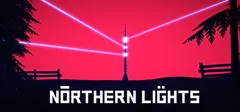
Identifiers +
- MobyGames ID: 167176
Are you familiar with this game? Help document and preserve this entry in video game history! If your contribution is approved, you will earn points and be credited as a contributor.
- Ad Blurb (+1 point)
- Alternate Title (+1 point)
- Content Rating (+1 point)
- Correction (+1 point)
- Credits (+2 points, plus ¼ point per credit)
- Critic Review (+½ point)
- Group (+¼ point)
- Product Code (+¼ point)
- Related Site (+1 point)
- Release info (+1 point)
- Relation (+½ point)
- Screenshots (+2 points)
- Tech Spec (+1 point)
- Trivia (+1 point)
- Video (+1 point)
Contributors to this Entry
Game added by Emlyn Hughes .
Game added July 25, 2021. Last modified February 12, 2023.
- listening party
- existing artist
- See all results
No matching results
Try a different filter or a new search keyword.
Search all Bandcamp artists, tracks, and albums
- artists PRO view site
- edit profile
- subscription subscription
- view collection
- showLinkedBands(!showLinkedBands())" data-test="linked-accounts-header">

Travel Through Time Volume 1: Northern Lights — ZX Spectrum Game OST
By tiurula / zosya entertainment.

Digital Album Streaming + Download
Free download , share / embed.

ZOSYA entertainment Saint Petersburg, Russia
Brand new games for ZX Spectrum: zosya.net
discography

contact / help
Contact ZOSYA entertainment
Streaming and Download help
Report this album or account
If you like Travel Through Time Volume 1: Northern Lights — ZX Spectrum Game OST, you may also like:

Social Caterpillar OST by Lannie "Merlandese" Neely III
featured on Bandcamp Radio Nov 5, 2013

Best of Fortnite: Vol. 1 by Fortnite
“The Best of Fortnite Vol 1,” featuring a tracklist of player favorites, is finally available digitally & on vinyl exclusively on Bandcamp. Bandcamp New & Notable Apr 25, 2024

Piano Collections: Pokémon Blue by Trevor Alan Gomes
Get nostalgic for the Gameboy game with this stunning rendition of the Pokémon Blue soundtrack on piano. Bandcamp New & Notable Nov 16, 2017
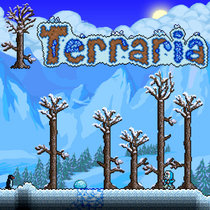
Terraria Soundtrack Volume 2 by Scott Lloyd Shelly
Quirky chip tunes collide with atmospheric strings on the musical component to a dig, fight, explore, and build game. Bandcamp New & Notable Nov 5, 2013

DELTARUNE Chapter 2 OST by Toby Fox
Catchy, quirky, and laced with beloved leitmotifs, the OST to Deltarune's second chapter solidifies Toby Fox's status as a VGM big shot. Bandcamp New & Notable Sep 29, 2021

Hades: Original Soundtrack by Darren Korb
The sublime soundtrack to 2020's critically-acclaimed roguelike spans hard rock bangers, smoldering ambient tracks, folk ballads, and more. Bandcamp New & Notable Sep 30, 2020

Ruya OST by Enrico Ercole
"Ruya's" original soundtrack is as soothing and zen-like as the game itself. Bandcamp New & Notable Mar 30, 2018
Bandcamp Daily your guide to the world of Bandcamp

Mark Sparling Is Video Game Music’s Latest Success Story

The Sound of “Tunic:” A Video Game Music Love Story

Olivier Deriviere’s Radical Vision for Video Game Music
On Bandcamp Radio

Wolf Hoffmann of Accept celebrates five decades of heavy metal.
- terms of use
- switch to mobile view

Travel Through Time Volume 1: Northern Lights
₽ 1,500.00
Out of stock
Description
Big box content, video trailer.
- 6 playable cars of 50s, 60s, 70s and 80s.
- Storyline and cutscenes.
- Various race types: challenge, time trial, duel, checkpoints etc.
- Night racing, winter racing.
- Many types of road objects.
- Bridges, overpasses with dynamic shadows, tunnels.
- Roadmarks and road signs.
- High frame rate (up to 25 FPS).
- AY music and engine sound.
- Audio tape with 2 copies of the game, one per side. Green cassette in green plastic case with inlay.
- Full color instructions booklet.
- Color poster A4.
- OST audio CD (by Tiurula) in slim jewel case.
1. Travel Through Time (3:17) 2. Junan Ikkunan Läpi (4:19) 3. Road North (4:06) 4. Distant Lights (3:31) 5. Road to Sortavala (4:33) 6. Tarinan Jatko (5:02) 7. On the Edge of the Land (3:56) 8. Polkka (0:53)
Travel Through Time (Main Menu) Road to Sortavala (Cutscenes) Junan Ikkunan Läpi (Cutscenes) Night in Hiitola (Cutscenes) Ensilumi (Level Failed)
Related products

Bonnie and Clyde


Travel Through Time Volume 1: Northern Lights - Could this be the next best thing for the ZX Spectrum?

Zosya Entertaiment has released some very decent ZX Spectrum games through the last couple of years, as not only did we have The Dark Redux, Drift! and Valley of Rains to enjoy but we also had the pleasure of playing the free arcade platformer of Bonnie and Clyde. Well if you're looking for more great news, and have a ZX Spectrum, we've just found out that the same company who released those games, will soon be releasing an incredible looking racing game called Travel Through Time Volume 1: Northern Lights.
Although details are very sparse at this stage, if you were a huge fan of games such as Out Run, or even Chase HQ then this upcoming game by Zosya Entertaiment is sure to excite. It has smooth scrolling, great music and sound effects, various racing modes such as checkpoints and chase, a story mode, night scenes, and from the video above or linked ( here ) fabulous speccy arcade racing graphics! So yes, certainly one to keep an eye on when it gets an eventual release.
No comments:
Post a comment.
All comments are moderated! Constructive criticism allowed, but abusive comments will be removed and you will be IP banned! Banned users will not show up in my comment feed, you will be gone for good as will all of your posts! - Play nice and enjoy IndieRetroNews!
- Educational Game
- Gang beat-em-up
- Race 'n' Chase
- Shoot-em-up
- Solo beat-em-up
- Vehicle Combat
- Flight Simulator
- Undetermined
- Simulation Game
- Tactical Combat
- System programs
- Educational
- Compilation
- Applications

Travel Through Time Vol.1: Northern Lights - ZX Spectrum Game

Leave a comment
Please perform a quick registration before leaving a comment
Votes history
If you're seeing this message, it means we're having trouble loading external resources on our website.
If you're behind a web filter, please make sure that the domains *.kastatic.org and *.kasandbox.org are unblocked.
To log in and use all the features of Khan Academy, please enable JavaScript in your browser.
Physics library
Course: physics library > unit 14, light: electromagnetic waves, the electromagnetic spectrum and photons.
- Electromagnetic waves and the electromagnetic spectrum
- Polarization of light, linear and circular
Introduction to electromagnetic waves
Basic properties of waves: amplitude, wavelength, and frequency, example: calculating the wavelength of a light wave, the electromagnetic spectrum, quantization of energy and the dual nature of light, example: calculating the energy of a photon, attributions.
- “ Electromagnetic Radiation ” from UC Davis ChemWiki, CC BY-NC-SA 3.0
Additional References
Want to join the conversation.
- Upvote Button navigates to signup page
- Downvote Button navigates to signup page
- Flag Button navigates to signup page


15.1 The Electromagnetic Spectrum
Section learning objectives.
By the end of this section, you will be able to do the following:
- Define the electromagnetic spectrum, and describe it in terms of frequencies and wavelengths
- Describe and explain the differences and similarities of each section of the electromagnetic spectrum and the applications of radiation from those sections
Teacher Support
The learning objectives in this section will help your students master the following standards
- (A) examine and describe oscillatory motion and wave propagation in various types of media;
- (B) investigate and analyze characteristics of waves, including velocity, frequency, amplitude, and wavelength, and calculate using the relationship between wave speed, frequency, and wavelength;
- (C) compare characteristics and behaviors of transverse waves, including electromagnetic waves and the electromagnetic spectrum, and characteristics and behaviors of longitudinal waves, including sound waves; and
- (F) describe the role of wave characteristics and behaviors in medical and industrial applications.
In addition, the High School Physics Laboratory Manual addresses content in this section in the lab titled: Light and Color, as well as the following standards:
- (C) compare characteristics and behaviors of transverse waves, including electromagnetic waves and the electromagnetic spectrum, and characteristics and behaviors of longitudinal waves, including sound waves.
- (B) compare and explain the emission spectra produced by various atoms.
Section Key Terms
[BL] Explain that the term spectrum refers to a physical property that has a broad range with values that are continuous in some cases and, in other cases, discrete. Ask for other examples of spectra, for example, sound, people’s heights, etc.
[OL] Ask students to name ways that sunlight affects Earth. Provide examples that students don’t name: photosynthesis, weather, climate, seasons, warming, etc. Discuss energy transformations that take place after light enters the atmosphere, such as transformations in food chains and ecosystems. Ask students if they can explain how the energy in fossil fuels was originally light energy.
Misconception Alert
The light we can see is called visible light. Dispel any misconceptions that visible light is somehow different from radiation we cannot see, except for frequency and wavelength. The fact that some radiation is visible has to do with how the eye functions, not with the radiation itself.
The Electromagnetic Spectrum
We generally take light for granted, but it is a truly amazing and mysterious form of energy. Think about it: Light travels to Earth across millions of kilometers of empty space. When it reaches us, it interacts with matter in various ways to generate almost all the energy needed to support life, provide heat, and cause weather patterns. Light is a form of electromagnetic radiation (EMR) . The term light usually refers to visible light , but this is not the only form of EMR. As we will see, visible light occupies a narrow band in a broad range of types of electromagnetic radiation.
[OL] Discuss electric, magnetic, and gravitational fields. Point out how these three fields are similar, and how they differ.
[AL] Describe vectors as having magnitude and direction, and explain that fields are vector quantities. In these cases, the fields are made up of forces acting in a direction.
Electromagnetic radiation is generated by a moving electric charge, that is, by an electric current. As you will see when you study electricity, an electric current generates both an electric field , E , and a magnetic field , B . These fields are perpendicular to each other. When the moving charge oscillates, as in an alternating current, an EM wave is propagated. Figure 15.2 shows how an electromagnetic wave moves away from the source—indicated by the ~ symbol.
[BL] Review wave properties: frequency, wavelength, and amplitude. Ask students to recall sound and water waves, and explain how they relate to these properties.
[OL] Explain that an important difference between EM waves and other waves is that they can travel across empty space.
[AL] Ask if students remember the differences between longitudinal and transverse waves. Give examples. Explain that waves carry energy, not matter.
Watch Physics
Electromagnetic waves and the electromagnetic spectrum.
This video, link below, is closely related to the following figure. If you have questions about EM wave properties, the EM spectrum, how waves propagate, or definitions of any of the related terms, the answers can be found in this video .
Grasp Check
In an electromagnetic wave, how are the magnetic field, the electric field, and the direction of propagation oriented to each other?
- All three are parallel to each other and are along the x -axis.
- All three are mutually perpendicular to each other.
- The electric field and magnetic fields are parallel to each other and perpendicular to the direction of propagation.
- The magnetic field and direction of propagation are parallel to each other along the y -axis and perpendicular to the electric field.
Direct students to use this video as a way of connecting to the information in the following two figures, as well as to the following table.
Virtual Physics
Radio waves and electromagnetic fields.
This simulation demonstrates wave propagation. The EM wave is propagated from the broadcast tower on the left, just as in Figure 15.2 . You can make the wave yourself or allow the animation to send it. When the wave reaches the antenna on the right, it causes an oscillating current. This is how radio and television signals are transmitted and received.
Where do radio waves fall on the electromagnetic spectrum?
- Radio waves have the same wavelengths as visible light.
- Radio waves fall on the high-frequency side of visible light.
- Radio waves fall on the short-wavelength side of visible light.
- Radio waves fall on the low-frequency side of visible light.
Connect the discussion from the previous video, in which the generation of an electromagnetic wave is described, to this application of transmission and reception of electromagnetic waves. In particular, point out how the reception of the radio wave is essentially identical to the method by which the wave is generated. Explain also that these electromagnetic waves are the carrier waves on which audio or visual signals—either analog or digital—are placed, so that they can be transmitted to receivers within a certain range of the broadcast antenna.
From your study of sound waves, recall these features that apply to all types of waves:
- Wavelength —The distance between two wave crests or two wave troughs, expressed in various metric measures of distance
- Frequency —The number of wave crests that pass a point per second, expressed in hertz (Hz or s –1 )
- Amplitude : The height of the crest above the null point
As mentioned, electromagnetic radiation takes several forms. These forms are characterized by a range of frequencies. Because frequency is inversely proportional to wavelength, any form of EMR can also be represented by its range of wavelengths. Figure 15.3 shows the frequency and wavelength ranges of various types of EMR. With how many of these types are you familiar?
Take a few minutes to study the positions of the various types of radiation on the EM spectrum, above. The narrow band that is visible light extends from lower-frequency red light to higher-frequency violet light. Frequencies just below the visible are called infrared (below red) and those just above are ultraviolet (beyond violet). Radio waves , which overlap with the frequencies used for media broadcasts of TV and radio signals, occupy frequencies even lower than infrared (IR). The microwave radiation that you see on the diagram is the same radiation that is used in a microwave oven. What we feel as radiant heat is also a form of low-frequency EMR. The high-frequency radiation to the right of ultraviolet (UV) includes X-rays and gamma (γ) rays.
[BL] Notice that most harmful forms of EM radiation are on the high-frequency end of the spectrum.
[OL] Ask which forms of EM radiation students have heard about. Ask them to describe the types of radiation they remember, and correct any misconceptions. Discuss the difference between ionizing radiation and nonionizing radiation, and the difference between electromagnetic radiation and other types of radiation—alpha, beta, etc.
Heat waves, a type of infrared radiation, are basically no different from other EM waves. We feel them as heat because they have a frequency that interacts with our bodies in a way that transforms EM energy into thermal energy.
Boundless Physics
Maxwell’s Equations
The Scottish physicist James Clerk Maxwell (1831–1879) is regarded widely to have been the greatest theoretical physicist of the nineteenth century. Although he died young, Maxwell not only formulated a complete electromagnetic theory, represented by Maxwell’s equations , he also developed the kinetic theory of gases, and made significant contributions to the understanding of color vision and the nature of Saturn’s rings.
Maxwell brought together all the work that had been done by brilliant physicists, such as Ørsted, Coulomb, Ampere, Gauss, and Faraday, and added his own insights to develop the overarching theory of electromagnetism. Maxwell’s equations are paraphrased here in words because their mathematical content is beyond the level of this text. However, the equations illustrate how apparently simple mathematical statements can elegantly unite and express a multitude of concepts—why mathematics is the language of science.
- Electric field lines originate on positive charges and terminate on negative charges. The electric field is defined as the force per unit charge on a test charge, and the strength of the force is related to the electric constant, ε 0 .
- Magnetic field lines are continuous, having no beginning or end. No magnetic monopoles are known to exist. The strength of the magnetic force is related to the magnetic constant, μ 0 .
- A changing magnetic field induces an electromotive force (emf) and, hence, an electric field. The direction of the emf opposes the change, changing direction of the magnetic field.
- Magnetic fields are generated by moving charges or by changing electric fields.
Maxwell’s complete theory shows that electric and magnetic forces are not separate, but different manifestations of the same thing—the electromagnetic force. This classical unification of forces is one motivation for current attempts to unify the four basic forces in nature—the gravitational, electromagnetic, strong nuclear, and weak nuclear forces. The weak nuclear and electromagnetic forces have been unified, and further unification with the strong nuclear force is expected; but, the unification of the gravitational force with the other three has proven to be a real head-scratcher.
One final accomplishment of Maxwell was his development in 1855 of a process that could produce color photographic images. In 1861, he and photographer Thomas Sutton worked together on this process. The color image was achieved by projecting red, blue, and green light through black-and-white photographs of a tartan ribbon, each photo itself exposed in different-colored light. The final image was projected onto a screen (see Figure 15.4 ).
Features that encouraged mathematicians and physicists to accept Maxwell’s equations is that they are seen as being both elegant and—considering the difference between an electric charge and a magnetic dipole, which give rise to the respective fields—essentially symmetrical. When scientists are looking for an approach to developing a new theory, they usually begin with the simplest and most symmetrical explanations. An example of such symmetry is the fact that electrons and protons have equal and opposite charges. You can see the symmetry in the four statements, given above, that describe the equations. The first two statements show a similar treatment of electric and magnetic fields, and the last two describe how a magnetic field can generate an electric field, and vice versa.
From our present-day perspective, we can now see the significance of Maxwell’s equations. This was the first step in the quest to unify all natural forces under one theory. After Maxwell unified the electric and magnetic forces as the electromagnetic force, others unified this force with the weak nuclear force, and there is evidence that the strong nuclear force can be unified with the electroweak force. The only force that has resisted unification with the others is the gravitational force. A theory that would unify all forces is often referred as a grand unified theory or a theory of everything . The quest for such a theory is still underway.
- According to Maxwell’s equations, electromagnetic force gives rise to electric force and magnetic force.
- According to Maxwell’s equations, electric force and magnetic force are different manifestations of electromagnetic force.
- According to Maxwell’s equations, electric force is the cause of electromagnetic force.
- According to Maxwell’s equations, magnetic force is the cause of electromagnetic force.
Characteristics of Electromagnetic Radiation
All the EM waves mentioned above are basically the same form of radiation. They can all travel across empty space, and they all travel at the speed of light in a vacuum. The basic difference between types of radiation is their differing frequencies. Each frequency has an associated wavelength. As frequency increases across the spectrum, wavelength decreases. Energy also increases with frequency. Because of this, higher frequencies penetrate matter more readily. Some of the properties and uses of the various EM spectrum bands are listed in Table 15.1 .
[BL] Explain transparency and opacity. Discuss how some materials are transparent to certain frequencies but opaque to others. Ask students for examples of materials that can be penetrated by some EM frequencies but not by others. Ask for examples of materials that are transparent to visible light and materials that are opaque to visible light.
[OL] Ask students why a lead apron is laid across dental patients during dental X-rays. Explain that X-rays are at the high-energy end of the spectrum and that they are very penetrating. They are only stopped by very dense materials, such as lead.
[AL] Ask if students can explain Earth’s greenhouse effect in terms of the penetrating power of various frequencies of EM radiation. Explain that the atmosphere is more transparent to visible light than to heat waves. Visible light penetrates the atmosphere and warms Earth’s surface. The heated surface radiates heat waves, which are trapped partially by certain gases in the atmosphere.
The narrow band of visible light is a combination of the colors of the rainbow. Figure 15.5 shows the section of the EM spectrum that includes visible light. The frequencies corresponding to these wavelengths are 4.0 × 10 14 s −1 4.0 × 10 14 s −1 at the red end to 7.9 × 10 14 s −1 7.9 × 10 14 s −1 at the violet end. This is a very narrow range, considering that the EM spectrum spans about 20 orders of magnitude.
[BL] Review the primary and secondary colors of pigments. Note that this is subtractive color mixing.
[OL] Explain the difference between subtractive and additive color mixing. The colors on the subtractive color wheel are made by pigments that absorb all colors but one. Therefore, when these colors all overlap, all light is absorbed and the result is black. White light is a combination of all colors, so when all colors are added together on the additive color wheel, the result is white. Explain that cyan is a shade of blue and that magenta is a shade of red.
Tips For Success
Wavelengths of visible light are often given in nanometers, nm. One nm equals 10 −9 10 −9 m. For example, yellow light has a wavelength of about 600 nm, or 6 × 10 −7 6 × 10 −7 m.
As a child, you probably learned the color wheel, shown on the left in Figure 15.6 . It helps if you know what color results when you mix different colors of paint together. Mixing two of the primary pigment colors—magenta, yellow, or cyan—together results in a secondary color. For example, mixing cyan and yellow makes green. This is called subtractive color mixing. Mixing different colors of light together is quite different. The diagram on the right shows additive color mixing. In this case, the primary colors are red, green, and blue, and the secondary colors are cyan, magenta, and yellow. Mixing pigments and mixing light are different because materials absorb light by a different set of rules than does the perception of light by the eye. Notice that, when all colors are subtracted, the result is no color, or black. When all colors are added, the result is white light. We see the reverse of this when white sunlight is separated into the visible spectrum by a prism or by raindrops when a rainbow appears in the sky.
Color Vision
This video demonstrates additive color and color filters. Try all the settings except Photons .
- A blue filter absorbs blue light, causing the observed light to be a combination of the other colors.
- A blue filter absorbs the opposite color of light—orange, causing the observed light to be blue.
- A blue filter permits only blue light to pass though, absorbing the other colors and leaving blue light for the observer.
- A blue filter permits only the opposite color light—orange—to pass through, leaving orange light for the observer.
Have students adjust the different colored lights for the RGB bulb simulation, first with individual settings, then with combinations of two and three colors to see what colors result and are perceived. Similarly, with the Single Bulb simulation, have students note how different filter settings affect what colors are seen for light with different color components.
Links To Physics
Animal color perception.
The physics of color perception has interesting links to zoology. Other animals have very different views of the world than humans, especially with respect to which colors can be seen. Color is detected by cells in the eye called cones . Humans have three cones that are sensitive to three different ranges of electromagnetic wavelengths. They are called red, blue, and green cones, although these colors do not correspond exactly to the centers of the three ranges. The ranges of wavelengths that each cone detects are red, 500 to 700 nm; green, 450 to 630 nm; and blue, 400 to 500 nm.
Most primates also have three kinds of cones and see the world much as we do. Most mammals other than primates only have two cones and have a less colorful view of things. Dogs, for example see blue and yellow, but are color blind to red and green. You might think that simpler species, such as fish and insects, would have less sophisticated vision, but this is not the case. Many birds, reptiles, amphibians, and insects have four or five different cones in their eyes. These species don’t have a wider range of perceived colors, but they see more hues, or combinations of colors. Also, some animals, such as bees or rattlesnakes, see a range of colors that is as broad as ours, but shifted into the ultraviolet or infrared.
These differences in color perception are generally adaptations that help the animals survive. Colorful tropical birds and fish display some colors that are too subtle for us to see. These colors are believed to play a role in the species mating rituals. Figure 15.7 shows the colors visible and the color range of vision in humans, bees, and dogs.
The symbiotic relationship between plants and their pollinators—bees, birds, etc.—is related to color perception. Plants have evolved to have flowers with colors that bees can see easily, and bees can find those flowers easily to collect the nectar they need for survival.
The belief that bulls are enraged by seeing the color red is a misconception. What did you read in this Links to Physics that shows why this belief is incorrect?
- Bulls are color-blind to every color in the spectrum of colors.
- Bulls are color-blind to the blue colors in the spectrum of colors.
- Bulls are color-blind to the red colors in the spectrum of colors.
- Bulls are color-blind to the green colors in the spectrum of colors.
Humans have found uses for every part of the electromagnetic spectrum. We will take a look at the uses of each range of frequencies, beginning with visible light. Most of our uses of visible light are obvious; without it our interaction with our surroundings would be much different. We might forget that nearly all of our food depends on the photosynthesis process in plants, and that the energy for this process comes from the visible part of the spectrum. Without photosynthesis, we would also have almost no oxygen in the atmosphere.
[BL] Ask how different frequencies of EM radiation are applied. Name each frequency range, and ask the students to supply the application, for example, X-rays used in medical imaging.
[OL] Ask students if they know why low-frequency radiation generally has different uses than high-frequency radiation. Explain that it has to do with penetrating power, which is related to health hazards.
[AL] Mention the ranges of TV signals designated very high frequency (VHF) and ultrahigh frequency (UHF). Explain that these frequencies are only relatively high compared to radio broadcast frequencies. Their place in the whole EM spectrum is at the low end.
The low-frequency, infrared region of the spectrum has many applications in media broadcasting. Television, radio, cell phone, and remote-control devices all broadcast and/or receive signals with these wavelengths. AM and FM radio signals are both low-frequency radiation. They are in different regions of the spectrum, but that is not their basic difference. AM and FM are abbreviations for amplitude modulation and frequency modulation . Information in AM signals has the form of changes in amplitude of the radio waves; information in FM signals has the form of changes in wave frequency .
Another application of long-wavelength radiation is found in microwave ovens. These appliances cook or warm food by irradiating it with EM radiation in the microwave frequency range. Most kitchen microwaves use a frequency of 2.45 × 10 9 2.45 × 10 9 Hz. These waves have the right amount of energy to cause polar molecules, such as water, to rotate faster. Polar molecules are those that have a partial charge separation. The rotational energy of these molecules is given up to surrounding matter as heat. The first microwave ovens were called Radaranges because they were based on radar technology developed during World War II.
Radar uses radiation with wavelengths similar to those of microwaves to detect the location and speed of distant objects, such as airplanes, weather formations, and motor vehicles. Radar information is obtained by receiving and analyzing the echoes of microwaves reflected by an object. The speed of the object can be measured using the Doppler shift of the returning waves. This is the same effect you learned about when you studied sound waves. Like sound waves, EM waves are shifted to higher frequencies by an object moving toward an observer, and to lower frequencies by an object moving away from the observer. Astronomers use this same Doppler effect to measure the speed at which distant galaxies are moving away from us. In this case, the shift in frequency is called the red shift , because visible frequencies are shifted toward the lower-frequency, red end of the spectrum.
Exposure to any radiation with frequencies greater than those of visible light carries some health hazards. All types of radiation in this range are known to cause cell damage. The danger is related to the high energy and penetrating ability of these EM waves. The likelihood of being harmed by any of this radiation depends largely on the amount of exposure. Most people try to reduce exposure to UV radiation from sunlight by using sunscreen and protective clothing. Physicians still use X-rays to diagnose medical problems, but the intensity of the radiation used is extremely low. Figure 15.8 shows an X-ray image of a patient’s chest cavity.
One medical-imaging technique that involves no danger of exposure is magnetic resonance imaging (MRI). MRI is an important imaging and research tool in medicine, producing highly detailed two- and three-dimensional images. Radio waves are broadcast, absorbed, and reemitted in a resonance process that is sensitive to the density of nuclei, usually hydrogen nuclei—protons.
Check Your Understanding
Use these questions to assess student achievement of the section’s Learning Objectives. If students are struggling with a specific objective, these questions will help identify any gaps and direct students to the relevant content.
Identify the fields produced by a moving charged particle.
- Both an electric field and a magnetic field will be produced.
- Neither a magnetic field nor an electric field will be produced.
- A magnetic field, but no electric field will be produced.
- Only the electric field, but no magnetic field will be produced.
- Visible light has higher frequencies and shorter wavelengths than X-rays.
- Visible light has lower frequencies and shorter wavelengths than X-rays.
- Visible light has higher frequencies and longer wavelengths than X-rays.
- Visible light has lower frequencies and longer wavelengths than X-rays.
- The wavelength increases.
- The wavelength first increases and then decreases.
- The wavelength first decreases and then increases.
- The wavelength decreases.
- X-rays have higher penetrating energy than radio waves.
- X-rays have lower penetrating energy than radio waves.
- X-rays have a lower frequency range than radio waves.
- X-rays have longer wavelengths than radio waves.
- both an electric field and a magnetic field
- neither a magnetic field nor an electric field
- only a magnetic field, but no electric field
- only an electric field, but no magnetic field
As an Amazon Associate we earn from qualifying purchases.
This book may not be used in the training of large language models or otherwise be ingested into large language models or generative AI offerings without OpenStax's permission.
Want to cite, share, or modify this book? This book uses the Creative Commons Attribution License and you must attribute Texas Education Agency (TEA). The original material is available at: https://www.texasgateway.org/book/tea-physics . Changes were made to the original material, including updates to art, structure, and other content updates.
Access for free at https://openstax.org/books/physics/pages/1-introduction
- Authors: Paul Peter Urone, Roger Hinrichs
- Publisher/website: OpenStax
- Book title: Physics
- Publication date: Mar 26, 2020
- Location: Houston, Texas
- Book URL: https://openstax.org/books/physics/pages/1-introduction
- Section URL: https://openstax.org/books/physics/pages/15-1-the-electromagnetic-spectrum
© Jan 19, 2024 Texas Education Agency (TEA). The OpenStax name, OpenStax logo, OpenStax book covers, OpenStax CNX name, and OpenStax CNX logo are not subject to the Creative Commons license and may not be reproduced without the prior and express written consent of Rice University.

Could These Crystals Help Us Travel Through Time?
A mysterious phase of matter has unlocked crucial clues about our universe right now. But what about the past and future?
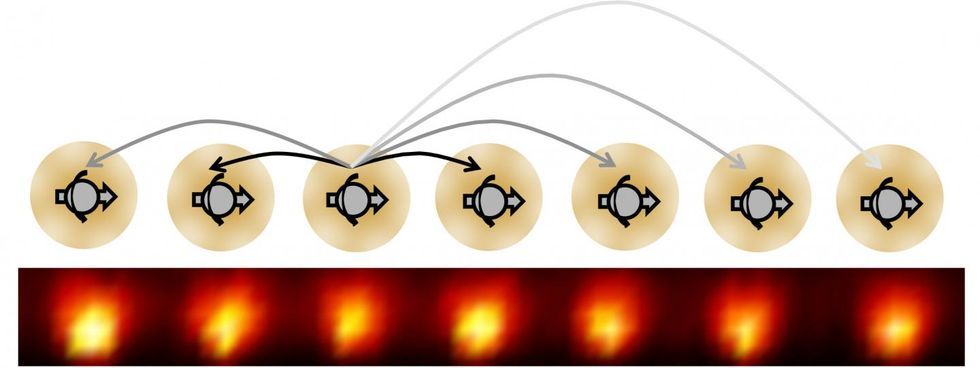
Breaking the Symmetry of Time
To wrap your head around time crystals, imagine snowflakes or rubies—crystals that tantalizingly corrupt spatial symmetry. Unlike the perfectly symmetrical empty space, there are spots on these spatial crystals that look different than other spots, such as their edges. In much the same way, then, a time crystal breaks the symmetry of time: their atoms love being in different points in space at different points in time, shifting directions as if a pulsating force flipped them.
Even more so, time crystals can move without absorbing energy because they’re created from trapped ions—blends of electric or magnetic fields that can capture charged particles, usually in a system isolated from an external environment, with the capacity to tirelessly gyrate, even at their lowest energy-point (their so-called ground state ).
Vladimir Eltsov, an applied physicist at Aalto University in Finland, who, together with professor Grigori Volovik and doctoral candidate Samuli Autti, took a time quasi-crystal and morphed it into a wholesome and superfluid time crystal in May 2018, is electrified by the virtues of time crystals—even if he doesn’t (yet) believe in their power to turn us all into budding Doc Browns.
Elstov instead prefers to think about how time crystals can advance us technologically. For example, time crystals can help us make highly sensitive magnetic-field detectors or components of quantum computers. And such is Eltsov’s faith in these fascinating structures that he believes they can be our ally in tackling the most theoretical and highbrow stumpers related to the fundamental laws ruling the universe.
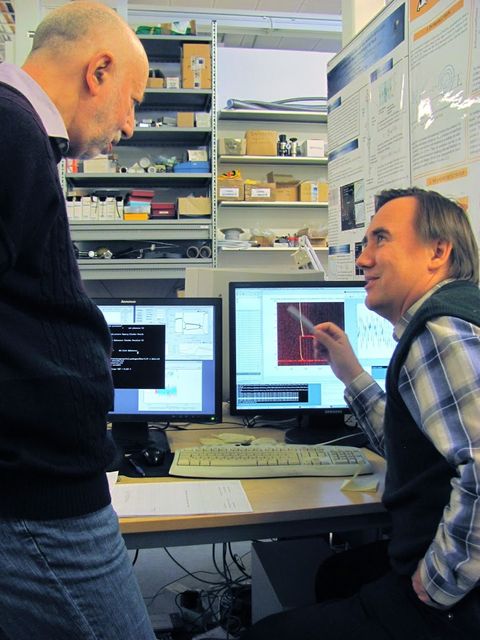
In 2012, Massachusetts Institute of Technology theoretical physicist and Nobel Laureate Frank Wilczek first hypothesized that the periodicity ( the quality of occurring at orderly intervals in space) of crystals was an affair of time, too; Wilczek envisaged a system at its lowest energy state, with the ability to freeze in space like a normal crystal. In a hot minute, however, Patrick Bruno from the European Synchrotron Radiation Facility in Grenoble, France—followed moments later by Haruki Watanabe from the University of California, Berkeley, and Masaki Oshikawa from the University of Tokyo—branded Wilczek’s suggestion as impracticable.
“Where on Earth would a system in its ground state find the energy to produce the periodic motion in the first place?” they barked. Only in a system that was forced out of a state of balance—its equilibrium state— by some kind of driving force could periodic time crystal behavior be attained, Watanabe and Oshikawa said. That was it. Scientific circles quickly resurfaced the notion of “Floquet systems,” or quantum systems in which some type of driving force endows the system with periodicity (originally grasped and mathematically calculated in the 19th century by mathematician Gaston Floquet).
In 2015, theoretical physicist Shivaji Sondhi and his Princeton University colleagues published a paper that made the theoretical basis for how time crystals could actually exist.
“We did not have time crystals specifically in our mind at that point, but non-equilibrium states of matter,” says Vedika Khemani, back then a member of the pioneering Princeton team, and today, a condensed matter physicist at Stanford University. The team was investigating what happens when certain isolated quantum systems, made of a potpourri of interacting particles, are frequently prodded by shining a laser on them.
Counterintuitive to conventional physics, which maintained that mayhem would ensue once the systems would heat up, the Princeton team’s calculations showed that under certain conditions, the particles would glue together to form a phase of matter with properties previously unseen.

Picture a pendulum. A conventional pendulum that isn’t powered by battery or some other generator will eventually succumb to friction and slow down. Even in an “idealized” pendulum placed in a frictionless environment—in a vacuum—the interactions between the multiple particles that make up the pendulum will create internal strains, and again lead the pendulum to inertia. An even further idealized pendulum that has only one particle will be able to go back and forth forever, but it’s not a unique time crystal. In contrast, the Princeton team’s pendulum was one in which many particles could continue pulsing forever without requiring a constant feed of energy. It was a whole new state of matter.
Soon, two groups of experimenters began attempting to build time crystals in the lab. The first, from Harvard University (where Khemani was also a member), experimented with creating an artificial lattice in a synthetic diamond. The second, from the University of Maryland, used a chain of charged particles called “ytterbium ions.”
Prestigious universities like Princeton, Harvard , and UC Berkeley aren’t the only institutions that have jumped headfirst into investigating time crystals. Even the U.S. military has devoted significant resources to tapping into the mystifying qualities of these conceptually surprising structures.
If Not Crystals, What About ...
So if the research into time crystals shows no signs of exhaustion, perhaps they can allow time travel after all?
“No,” says Khemani, bluntly. “It is a brand-new phase of matter that’s really special, one that’s really exotic. But that’s all.” And her view is unanimously shared by all scientists we asked, including Stephen Holler, a physicist at Fordham University who experiments with crystals in optical systems.
“Time crystals might be instead used as quantum memory storage units,” Holler says. Quantum communication, the transmission of information using quantum bits, can provide us with a very secure way of transmitting information from one place to another, something quite useful for, say, the banking sector or national security. It seems that time crystals’ maximum durability under circumstances elsewhere impossible may as well hold the secret to achieving coherence in quantum computing, echoes Eltsov.
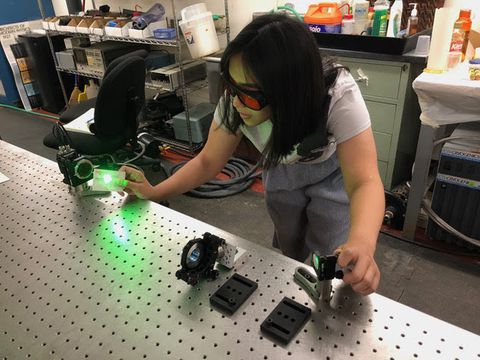
We’ll need to wait at least five years, however, before quantum communication systems emerge into the marketplace and start to make their way into our commercial systems, says Holler. Meanwhile, scientists like Khemani remain cautious about the whole conversation surrounding quantum communication.
Still, is it so wrong—and outside the realm of scientific possibility—for us to still want to bend time through some means other than time crystals?
Here’s the good news: “Time travel cannot be excluded in principle,” says Eltsov.
Now here’s the slightly disappointing news: “But to understand it would require immense energy densities we are unable to produce in the lab either now or in the foreseeable future.”
Think of the Large Hadron Collider (LHC) at CERN, the European Organization for Nuclear Research. The LHC, the world’s largest and most powerful particle accelerator, weighs over 38,000 tons , runs for 27 kilometers in an underground tunnel, has particles guided by titanic superconducting magnets frenzying about it to speeds of 11,000 circuits per seconds, and cost about $4.8 billion. That’s really, really massive—and we’d still need orders of magnitude beyond that to even look into time travel, Holler says. We’re simply not ready.
“It’s completely unfeasible with current technologies,” says Curt von Keyserlingk, a theoretical physicist at the University of Birmingham, who contributed additional theoretical work with Khemani and Sondhi on time crystals in 2016. “But this does not mean it is impossible,” he swiftly adds, prompting us to take a look at the work of physicist Kip S. Thorne.

Finding and Filling the Cracks
In 2017, Thorne was awarded the Nobel Prize in Physics alongside Rainer Weiss and Barry C. Barish for the first detection of a gravitational wave. Thorne is best known in the unforgiving world of physics as the originator of sci-fi friendly ideas. He’s the one who advised cosmologist and writer Carl Sagan on resorting to a hypothetical traversable wormhole connecting two periods in time to transport Jodie Foster through the universe in Contact, the 1997 film based on Sagan’s 1985 novel. He also helped create a black hole for Interstellar and said that wormholes could be used for space travel and time travel.
Thorne offered explanations for several logical conundrums regarding time travel, including the paradox of going back in time through a wormhole and accidentally killing your grandfather, thereby also killing yourself. (How can you exist if your father doesn’t exist, since the sperm half responsible for his conception was destroyed … by you?) In 1991, Thorne did some mathematical calculations and found that such paradoxes couldn’t arise, but were instead replaced by an infinite number of other potential outcomes. (You could go back in time and mess around with your grandfather all you want, but there’s no way you could have killed him, otherwise you wouldn’t exist to kill him in the first place.)
Then there’s the theory of the many worlds hypothesis, which could resolve some of the implications of going back in time and altering the future. This hypothesis suggests we live in a near-infinity of universes that have the same physical laws and values, but exist in different states and are arranged so that no information can pass between them. Essentially, with every decision we make, the universe splits into multiple realities, and we’re completely unaware of the alternative scenarios our exact replicas experience in the other universes.
.css-2l0eat{font-family:UnitedSans,UnitedSans-roboto,UnitedSans-local,Helvetica,Arial,Sans-serif;font-size:1.625rem;line-height:1.2;margin:0rem;padding:0.9rem 1rem 1rem;}@media(max-width: 48rem){.css-2l0eat{font-size:1.75rem;line-height:1;}}@media(min-width: 48rem){.css-2l0eat{font-size:1.875rem;line-height:1;}}@media(min-width: 64rem){.css-2l0eat{font-size:2.25rem;line-height:1;}}.css-2l0eat b,.css-2l0eat strong{font-family:inherit;font-weight:bold;}.css-2l0eat em,.css-2l0eat i{font-style:italic;font-family:inherit;} “Resolving the hardest problems in physics requires throwing away a lot of our preconceived notions.”
“Time travel would, in the theory of multiverses, have us wind up on one of these other universes, so it would not necessarily be a straight linear path forward to back for us, but a crossing between universes,” says Holler. “I’m not completely sold on it, but there are plenty of smart people working on it and seem to believe it’s very, very feasible,” he continues.
But the incredibly prepossessing theory of multiverses lacks proof in the form of solid calculations, says von Keyserlingk. For him, the problem with the many worlds interpretation and time travel isn’t that they’re necessarily fiction, but that we may currently be missing the mathematical tools and even philosophical ideas to negotiate these things. They’re at the very theoretical end of physics, he says: things that we can really only speculate on, whereas science at its best is just “informed speculation.”
“It can sometimes happen that nature presents us with issues that no one has figured out before,” von Keyserlingk says. “One of the issues is that we have a fairly fixed idea of what space and time is. Resolving the hardest problems in physics requires throwing away a lot of our preconceived notions.”
In a more mathematically, philosophically advanced future, then, could we discover more time-traveling properties of time crystals? Don’t hold your breath, Khemani says. While the crystals do hold a few tiny secrets of the universe, the only thing they have in common with time travel is just one word: time. That’s at least for now—but maybe not forever.
Stav Dimitropoulos’s science writing has appeared online or in print for the BBC, Discover, Scientific American, Nature, Science, Runner’s World, The Daily Beast and others. Stav disrupted an athletic and academic career to become a journalist and get to know the world.

.css-cuqpxl:before{padding-right:0.3125rem;content:'//';display:inline;} Pop Mech Pro .css-xtujxj:before{padding-left:0.3125rem;content:'//';display:inline;}

Overhaul Your Shop

The Source of All Consciousness May Be Black Holes

F-22s are Flocking to This Island in the Pacific

Special Ops Gunship Shreds “Fishing Boat”

Russia's Unprecedented Nuclear Drills
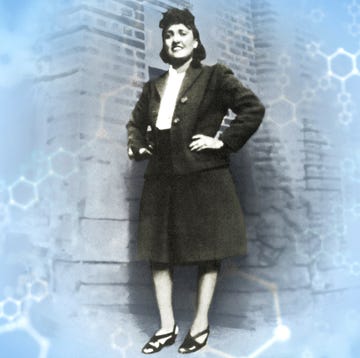
Henrietta Lacks Never Asked to Be Immortal

Ukraine Is Using an Ancient Weapon on Russia

Inside the CIA’s Quest to Steal a Soviet Sub

Jumpstart Your Car With a Cordless Tool Battery

Lost Villa of Rome’s Augustus Potentially Found

Could Freezing Your Brain Help You Live Forever?
The Fascinating Journey Of Frequencies Across The Spectrum: Exploring Changes As You Travel
- Last updated May 08, 2024
- Difficulty Intemediate
- Category Travel

Have you ever wondered what happens to sound and light waves as they travel across different frequencies? From the lowest bass notes to the highest soprano pitches, and from radio waves to gamma rays, the journey of frequencies across the spectrum is a fascinating one. Exploring the changes and transformations that occur as these waves move through space can unlock a world of knowledge about the nature of waves and the interconnectedness of our universe. Join us on a captivating adventure as we dive into the depths of the frequency spectrum and discover the wonders that await at every step of the way.
What You'll Learn
Introduction to the electromagnetic spectrum and frequency variations, frequency increase in the electromagnetic spectrum towards higher energy levels, frequency decrease in the electromagnetic spectrum towards lower energy levels, factors influencing frequency changes across the electromagnetic spectrum.

The electromagnetic spectrum is a range of electromagnetic waves, which includes everything from the radio waves we use to listen to music, to the visible light we see, to the X-rays that doctors use to see our bones. These waves are a form of energy that travel through space, carrying information and transmitting energy from one place to another. One of the most important properties of electromagnetic waves is their frequency, which determines their characteristics and behavior.
Frequency is a measure of how often a wave oscillates or repeats itself in a given period of time. In the case of electromagnetic waves, frequency refers to the number of waves passing through a particular point in one second. It is usually measured in Hertz (Hz), where one Hertz equals one wave per second.
As we move across the electromagnetic spectrum from lower frequency waves to higher frequency waves, the characteristics of the waves change significantly. Let's explore how frequency varies across the spectrum and understand the differences between the various types of waves.
Starting from the lowest end of the spectrum, we have radio waves. These waves have the lowest frequency and longest wavelength. Radio waves are commonly used for communication, broadcasting, and radar. As we move up the spectrum, the frequency increases, and the wavelength becomes shorter.
Next, we encounter microwaves, which have higher frequencies than radio waves. Microwaves are commonly used for cooking, mobile communications, and satellite transmissions. They have shorter wavelengths than radio waves but longer wavelengths than infrared waves.
After microwaves, we encounter infrared (IR) waves. These waves have higher frequencies and shorter wavelengths than microwaves. IR waves are often used in remote controls, as well as for heat detection and thermal imaging.
Moving on, we reach the visible light spectrum. Visible light consists of different colors, each with its own frequency and wavelength range. Starting from the lowest frequency, we have red light, followed by orange, yellow, green, blue, indigo, and violet light, which has the highest frequency. This light is what we are able to see with our eyes.
Beyond the visible light spectrum, we find ultraviolet (UV) waves. These waves have higher frequencies and shorter wavelengths than visible light. UV waves have various applications, including sterilization, fluorescent imaging, and tanning.
Further up the spectrum, we have X-rays. X-rays have even higher frequencies and shorter wavelengths than UV waves. They are commonly used in medicine for diagnostic imaging, such as X-ray scans and CT scans.
Finally, we reach the end of the spectrum with gamma rays. Gamma rays have the highest frequencies and shortest wavelengths of any known electromagnetic waves. They are generated by nuclear reactions and are used in cancer treatment, sterilization, and security scanning.
In conclusion, as we travel across the electromagnetic spectrum, the frequency of waves increases, while the wavelength decreases. This variation in frequency and wavelength leads to different types of waves with unique characteristics and uses. Understanding these variations is crucial in harnessing the full potential of electromagnetic waves in various fields of science and technology.
Traveling to Switzerland with a Schengen Visa: What You Need to Know
You may want to see also
The electromagnetic spectrum, often referred to as the "spectrum," is a vast range of electromagnetic waves that encompass radio waves, microwaves, infrared radiation, visible light, ultraviolet radiation, X-rays, and gamma rays. These waves all have different frequencies and wavelengths, which determine their characteristics and applications. As you travel across the spectrum towards higher energy levels, the frequency also increases.
Frequency is a fundamental property of waves and refers to the number of wave cycles that pass by a given point in one second. It is usually measured in hertz (Hz), which signifies the number of cycles per second. In the case of the electromagnetic spectrum, the frequency of waves increases as you move from radio waves to gamma rays.
Radio waves, the lowest energy waves in the spectrum, have the lowest frequencies and longest wavelengths. They are used for various purposes, like broadcasting, communication, and radar. As you move up from radio waves, the frequency starts to increase gradually.
Next in line are microwaves, which have slightly higher frequencies and shorter wavelengths compared to radio waves. Microwaves find applications in technologies like microwave ovens, wireless communication, radar systems, and satellite communication.
Moving further up, we encounter infrared radiation, which has even higher frequencies and shorter wavelengths. Infrared radiation is known for its heat-generating properties and is widely used in applications such as night vision devices, remote sensing, and thermal imaging cameras.
Beyond infrared radiation lies visible light, the narrow range of wavelengths that our eyes can detect. This is the range where the frequency and energy levels start to increase significantly. Visible light consists of different colors, each with a specific frequency and energy level. The lowest frequency visible light is red, while the highest frequency visible light is violet.
Ultraviolet (UV) radiation comes after visible light and has higher frequencies than any color we can see. As the frequency increases, so does the energy of the waves. UV radiation is known for its harmful effects on the skin, causing sunburns and potentially leading to skin cancer. However, it also finds applications in disinfection, polymer curing, and forensic analysis.
As we move towards the higher energy levels of the spectrum, we encounter X-rays. X-rays have even higher frequencies and shorter wavelengths than UV radiation. They are commonly used in medical imaging, security scanning, and materials analysis.
At the highest energy levels of the spectrum, we have gamma rays. Gamma rays have the highest frequencies and shortest wavelengths of all electromagnetic waves. They are produced in nuclear reactions, radioactive decay, and high-energy particle interactions. Gamma rays are used in diverse fields such as cancer treatment, sterilization, and industrial monitoring.
In summary, frequency increases as you travel across the electromagnetic spectrum towards higher energy levels. Radio waves have the lowest frequencies, while gamma rays have the highest. Understanding this progression of frequencies is crucial for comprehending the behaviors and applications of different types of electromagnetic waves.
Understanding Italy's Visa Requirements for Travelers
As you travel across the electromagnetic spectrum, the frequency of electromagnetic waves decreases towards lower energy levels. This means that the waves become less frequent and have longer wavelengths. Understanding how frequency changes across the spectrum is important in various scientific and technological fields, such as telecommunications, astronomy, and medicine.
The electromagnetic spectrum is a range of all possible frequencies of electromagnetic radiation, which includes radio waves, microwaves, infrared, visible light, ultraviolet, X-rays, and gamma rays. Each of these types of radiation has a unique frequency and wavelength.
Starting from the high-frequency end of the spectrum, radio waves have the lowest energy and the longest wavelengths. These waves are commonly used for communication, including AM and FM radio signals, television broadcasts, and cell phone transmissions. The frequency range for radio waves is typically between 3 kilohertz (kHz) and 300 gigahertz (GHz), with wavelengths ranging from kilometers to millimeters.
Moving towards higher energy levels, microwaves have slightly higher frequencies and shorter wavelengths compared to radio waves. Microwaves are commonly used in cooking, cell phone communication, and radar systems. The frequency range for microwaves is typically between 300 megahertz (MHz) and 300 gigahertz (GHz), with wavelengths ranging from millimeters to centimeters.
Next on the spectrum is infrared radiation, which has frequencies slightly higher than microwaves. Infrared radiation is often associated with heat and is used in various applications such as night vision devices, remote controls, and thermal imaging cameras. The frequency range for infrared radiation is typically between 300 gigahertz (GHz) and 400 terahertz (THz), with wavelengths ranging from millimeters to micrometers.
As we move towards even higher energy levels, we encounter visible light. Visible light is the narrow portion of the electromagnetic spectrum that our eyes can detect. It is made up of different colors, each with a unique frequency and wavelength. The colors of visible light, in increasing order of frequency, are red, orange, yellow, green, blue, indigo, and violet. The range of visible light frequencies is approximately 430 terahertz (THz) to 770 terahertz (THz), with wavelengths ranging from hundreds of nanometers to several hundred nanometers.
Beyond visible light, we enter the realm of higher energy radiation. Ultraviolet (UV) radiation has frequencies higher than visible light and can be harmful to living organisms. It is commonly known for causing sunburn, so it's essential to protect your skin from exposure to excessive UV radiation. UV radiation is used in various applications, including sterilization, fluorescent lights, and tanning beds. The frequency range for UV radiation is typically between 800 terahertz (THz) and 30 petahertz (PHz), with wavelengths ranging from tens of nanometers to hundreds of picometers.
Continuing to higher energy levels, X-rays have frequencies higher than UV radiation. X-rays are widely used in medicine for imaging bones and organs, as well as in security screening at airports. The frequency range for X-rays is typically between 30 petahertz (PHz) and 30 exahertz (EHz), with wavelengths ranging from hundreds of picometers to tens of picometers.
At the highest energy levels of the spectrum, we find gamma rays. Gamma rays have the highest frequencies and the shortest wavelengths of all electromagnetic radiation. They are generated by radioactive materials and nuclear reactions. Gamma rays are used in cancer treatment, sterilization, and various scientific research applications. The frequency range for gamma rays is typically above 30 exahertz (EHz), with wavelengths ranging from tens of picometers to subatomic scales.
In summary, as you travel across the electromagnetic spectrum, the frequency of electromagnetic waves decreases towards lower energy levels. This results in longer wavelengths and less frequent waves. Understanding the various frequency ranges and their associated applications is essential for a wide range of scientific and technological fields.
Exploring the Possibility of J1 Visa Holders Traveling to Canada
The electromagnetic spectrum is a continuous range of frequencies and wavelengths, encompassing everything from radio waves to gamma rays. As you travel across the spectrum, there are various factors that influence how the frequency changes. In this article, we will explore these factors in detail.
- **Energy of the Electromagnetic Wave**: The frequency of an electromagnetic wave is directly proportional to its energy. As you move from lower frequency waves, such as radio waves, to higher frequency waves, such as gamma rays, the energy of the wave increases. This means that the frequency increases as you travel across the spectrum.
- **Propagation Speed**: The speed at which electromagnetic waves travel through space is a constant, known as the speed of light. Since the speed of light is constant, the frequency of the wave must change as the wavelength changes. As you move from longer wavelength waves, such as radio waves, to shorter wavelength waves, such as X-rays, the frequency increases.
- **Medium of Propagation**: The medium through which electromagnetic waves propagate can also impact the frequency. In a vacuum, electromagnetic waves travel at a constant speed. However, when the waves pass through a medium, such as air or water, they can slow down. This change in speed can result in a change in frequency, known as refraction. The exact change in frequency depends on the specific properties of the medium.
- **Interaction with Matter**: When electromagnetic waves interact with matter, they can be absorbed, reflected, or transmitted. Different materials have different absorption and reflection characteristics for different frequencies. For example, certain materials are transparent to visible light but absorb ultraviolet radiation. This interaction with matter can cause a change in frequency as the waves traverse different materials.
- **Source of the Wave**: The frequency of an electromagnetic wave is determined by its source. Different sources, such as stars or electronic devices, can emit waves at specific frequencies. As you move from one source to another, the frequency of the waves can change. Additionally, the technology used to generate and transmit electromagnetic waves, such as radio or television signals, can also impact the frequency.
In summary, as you travel across the electromagnetic spectrum, the frequency of the waves changes due to factors such as the energy of the wave, the propagation speed, the medium of propagation, the interaction with matter, and the source of the wave. Understanding these factors is essential in various scientific fields, including telecommunications, astronomy, and medical imaging.
Exploring Singapore: Traveling with a US Visa
Frequently asked questions.
Frequency increases as you travel from left to right across the spectrum. In other words, as you move from lower frequencies to higher frequencies, the value of the frequency increases.
Frequency increases as you travel across the spectrum because the spectrum represents different types of electromagnetic waves. Each type of wave has a characteristic frequency, and as you move towards higher frequencies, you are dealing with waves that have shorter wavelengths.
Yes, there are exceptions to this general rule. One notable exception is in the case of X-rays and gamma rays. These types of electromagnetic waves have extremely high frequencies, but they are positioned to the left of visible light on the spectrum.

- Karisa Garcia Author Reviewer Traveller

- Duke Trotter Author Editor Reviewer Traveller
It is awesome. Thank you for your feedback!
We are sorry. Plesae let us know what went wrong?
We will update our content. Thank you for your feedback!
Leave a comment
Travel photos, related posts.

Best International Travel Destinations for F1 Visa Holders
- May 08, 2024

The Ultimate Guide to Finding Out Which London Travel Zone Gatwick Airport is in
- May 10, 2024

The Ultimate Guide on Traveling from London to Geneva
- May 09, 2024

The Best Lenses to Pack for your Trip to China

The Logistics of High School Football Team Travel: Exploring the Journeys and Challenges

Are Expensive Travel Baseball Teams Worth the Investment?

IMAGES
VIDEO
COMMENTS
Travel Through Time Volume 1: Northern Lights. A game for ZX Spectrum with 128K of memory. Genre: Racing. Having started participating in amateur racing in Sweden in the 50s, you will go through an amazing story through decades, watching the development of the automotive industry and the life of one family. • 6 playable cars of 50s, 60s ...
ZX Spectrum 128kTravel Through Time - Volume 1: Northern Lights, A free downloadable racing game from ZOSYA Entertainment released in 2021.https://www.zosya....
All the way back to the 1970s. Game Review: Travel Through Time Vol. 1 - Northern Lights on ZX Spectrum. Throughout its lifetime, the limits of the ZX Spectrum were regularly tested and redefined by its racing games. Ironically, of course, that's in stark contrast to its main 8-bit rival, whose limits were regularly defined by them….
Travel Through Time Vol.1: Northern Lights Genre Arcade Game: Race 'n' Chase Publisher(s) ZOSYA entertainment Author(s) Machine type ZX-Spectrum 128K Number of players 1 Controls Cursor Interface 2 (left) Interface 2 (right) Kempston Message language English. No screenshots available. Downloads. Filename Size Type Origin
Travel Through Time Vol.1: Northern Lights is an arcade racing game developed by ZOSYA entertainment. It was released in 2021 for the ZX Spectrum 128K platfo...
TRAVEL THROUGH TIME : VOL 1 - NORTHERN LIGHTS - A Homebrew on the ZX Spectrum 128K. Published by Zosya Entertainments in 2021. Wow!As usual, it's not about p...
Travel Through Time Volume 1: Northern Lights is a racing game for the ZX Spectrum. It works on 128k models only. It has similarities with other games of the same genre like Out Run, WEC Le Mans and Chase H.Q.. It features a large number of short stages with a clear goal to accomplish to get beyond it.
Tracks 1 (Travel Through Time) and 8 (Polkka) were recorded specially for this game. Other tracks are taken from albums Tiurula — Tiurula (2019) and Tiurula — Tie Pohjoiseen (2020). Track 5 (Road to Sortavala) is slightly re-edited. Travel Through Time Volume 1: Northern Lights is a brand new game by ZOSYA entertainment for ZX Spectrum.
A game for ZX Spectrum with 128K of memory. Genre: Racing. Interface and documentation language: English. Having started participating in amateur racing in Sweden in the 50s, you will go through an amazing story through decades, watching the development of the automotive industry and the life of one family. 6 playable cars of 50s, 60s, 70s and 80s.
Travel Through Time Volume 1: Northern Lights - If you have a ZX Spectrum, this new racing game by Zosya Entertaiment will blow your mind! Zosya Entertaiment have released some very decent ZX Spectrum games through the last couple of years, as not only did we have The Dark Redux, Drift! and Valley of Rains to enjoy but we also had the pleasure ...
Travel Through Time Volume 1: Northern Lights - Could this be the next best thing for the ZX Spectrum? Zosya Entertaiment has released some very decent ZX Spectrum games through the last couple of years, as not only did we have The Dark Redux, Drift! and Valley of Rains to enjoy but we also had the pleasure of playing the free arcade platformer ...
Travel Through Time Vol.1: Northern Lights for ZX-Spectrum 128K (ZOSYA entertainment/Russia, 2021) by Kit, Manu, Tiurula Travel Through Time Vol.1: Northern Lights at Spectrum Computing - Sinclair ZX Spectrum games, software and hardware
Huge playlist archive with games from 2021: https://www.youtube.com/playlist?list=PLxOanVBhqd3uXfij6VCUapODD02S0FBebINTRODUCTION:Having started participating...
x. 4.40. Travel Through Time Vol.1: Northern Lights is an arcade racing game developed by ZOSYA entertainment. It was released in 2021 for the ZX Spectrum 128K platform. The game takes place in the 50s, 60s, 70s, and 80s, allowing players to experience different eras of racing. With unlimited attempts in the earlier stages, players aim to find ...
Electromagnetic radiation is one of the many ways that energy travels through space. The heat from a burning fire, the light from the sun, the X-rays used by your doctor, as well as the energy used to cook food in a microwave are all forms of electromagnetic radiation. While these forms of energy might seem quite different from one another ...
The electromagnetic spectrum is comprised of all frequencies of electromagnetic radiation that propagate energy and travel through space in the form of waves. Longer wavelengths with lower frequencies make up the radio spectrum.Shorter wavelengths with higher frequencies make up the optical spectrum. The portion of the spectrum that humans can see is called the visible spectrum.
Electromagnetic radiation is reflected or absorbed mainly by several gases in the Earth's atmosphere, among the most important being water vapor, carbon dioxide, and ozone. Some radiation, such as visible light, largely passes (is transmitted) through the atmosphere. These regions of the spectrum with wavelengths that can pass through the ...
The ZX Spectrum has had so many great racing games over the years but how does the latest Homebrew offering compare?Well let's look at the latest game from N...
Teacher Support [BL] Explain that the term spectrum refers to a physical property that has a broad range with values that are continuous in some cases and, in other cases, discrete. Ask for other examples of spectra, for example, sound, people's heights, etc. [OL] Ask students to name ways that sunlight affects Earth. Provide examples that students don't name: photosynthesis, weather ...
Thorne offered explanations for several logical conundrums regarding time travel, including the paradox of going back in time through a wormhole and accidentally killing your grandfather, thereby ...
per line. for 12 mos. when you get 2 lines. SHOP UNLIMITED. FREE international texting from the U.S. and while abroad. 2,000 minutes per line of combined monthly calling to Canada and Mexico. Unlimited talk, text and data (full speeds up to 30 GB) Additional lines available for $29.99/mo each.
ZX Spectrum -=Travel Through Time Volume 1: Northern Lights=-***Saberman&IndieRetroNews.com present: Travel Through Time Volume 1: Northern LightsCredits:Cod...
The electromagnetic spectrum is a range of electromagnetic waves, which includes everything from the radio waves we use to listen to music, to the visible light we see, to the X-rays that doctors use to see our bones. These waves are a form of energy that travel through space, carrying information and transmitting energy from one place to another.
Sorprendidos hemos quedado al contemplar el nuevo juego de ZOSYA entertainment para ZX Spectrum 128k que estará disponible pronto.Se trata de Travel Through ...